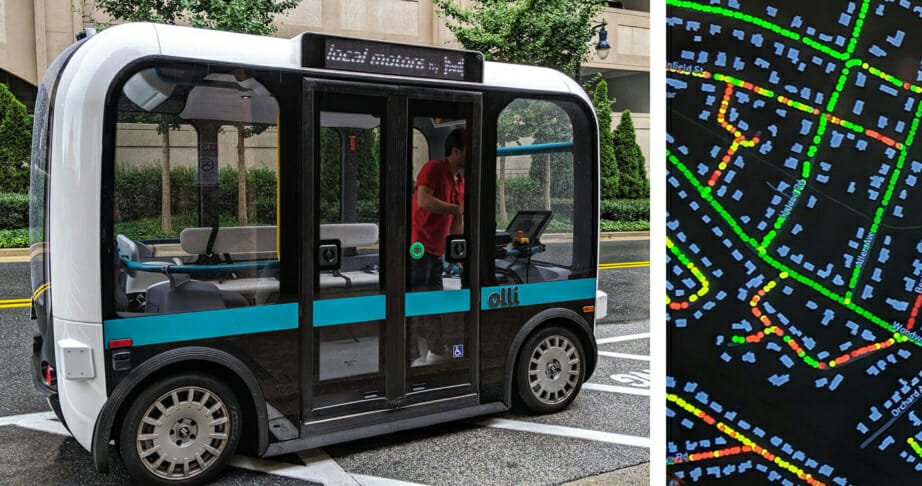
7 February 2020
Planning infrastructure for a future of change.
TSA SMART Prize winner Atul Agarwal delves into the hot topic Connected and Automated Vehicles (CAVs) with insights from his US study tour with Roads Australia.
Pittsburgh and Detroit are two cities adapting to change – they are coming out of the manufacturing age to become centres of modern transportation innovation in the United States with leading CAV innovators, start-ups and researchers coming together.
Uber’s Advanced Technologies Group (ATG) is headquartered in Pittsburgh where it ran controlled self-driving UBER operations, picking up real passengers, until a fatality in March 2018. The incident, which is still being investigated by the National Transportation Safety Board (NTSB), pushed back public testing trials for all CAV companies who have since spent significant resources on safety policies and reviews.
While Uber’s Volvo SUVs are back on the road in Pittsburgh in small numbers, Uber acknowledged that this incident has demanded a more stable, informed and steady approach in the path of implementation of autonomous cars for the CAV manufacturers/researchers. In terms of infrastructure Uber have said their self driving cars are being designed to work on existing road infrastructure and do not demand much more than the upkeep of the existing roads and kerbs.
Another interesting concept that is gaining a lot of popularity around the globe is the Autonomous shuttles. The shuttles are designed to operate in a controlled and limited geo-space (think sports parks, retirement communities, shopping precincts, airports etc.) with a capacity of carrying up to 12 passengers.
We met with Local Motors in Pittsburgh who gave us a demo of their self-driving mobility van – OLLI. These vans have LIDARS and cameras which continuously scans the streets for obstacles and connects with the base station that hosts the maps giving OLLI precision up to 0.1mm. OLLI is legislated to conduct trails in Pittsburgh national harbour area and is designed to travel up to 40 kmph. It was raining the day we trialled OLLI which meant OLLI’s sensors prompted frequent stops during the ride. We were told the next version of OLLI will have a weatherproof chamber for its LIDAR and Cameras to ensure seamless operation in all conditions. One thing I found exciting about OLLI is that most of its components are 3D printed using a mix of carbon fibre and ABS material which makes them capable of being manufactured in just a few days.
On the West Coast, we met with grass-root technology developers who are fundamentally responsible for the development of sustainable, connected and autonomous vehicles. California really stands out as an example of a forward looking state that is backing the industry and change. For example, Contra Costa County in California has completed an electric vehicle readiness plan and also supports the autonomous vehicles which are being heavily trialled in the state. California, of course, is also home to Silicon Valley where research companies like Palo Alto Research Centre (PARC), Roadbotics and NEO4J are researching solutions for the transport and infrastructure sectors.
Roadbotics use data captured using a simple phone camera to perform smart data analytics and produce reports with a complete analysis of the state of a road asset that can aid engineers in quickly identifying hot spots requiring maintenance or monitoring. Technology that has cross applications in commissioning and defects identification, asset maintenance/monitoring and risk modelling in our industry.
If we as project managers can work with our clients as they plan projects, considering these innovations and plan for their adaptation, then the infrastructure we are creating now will be ready for the future of transport.
Atul Agarwal, Project Manager
Get in touch with Atul


